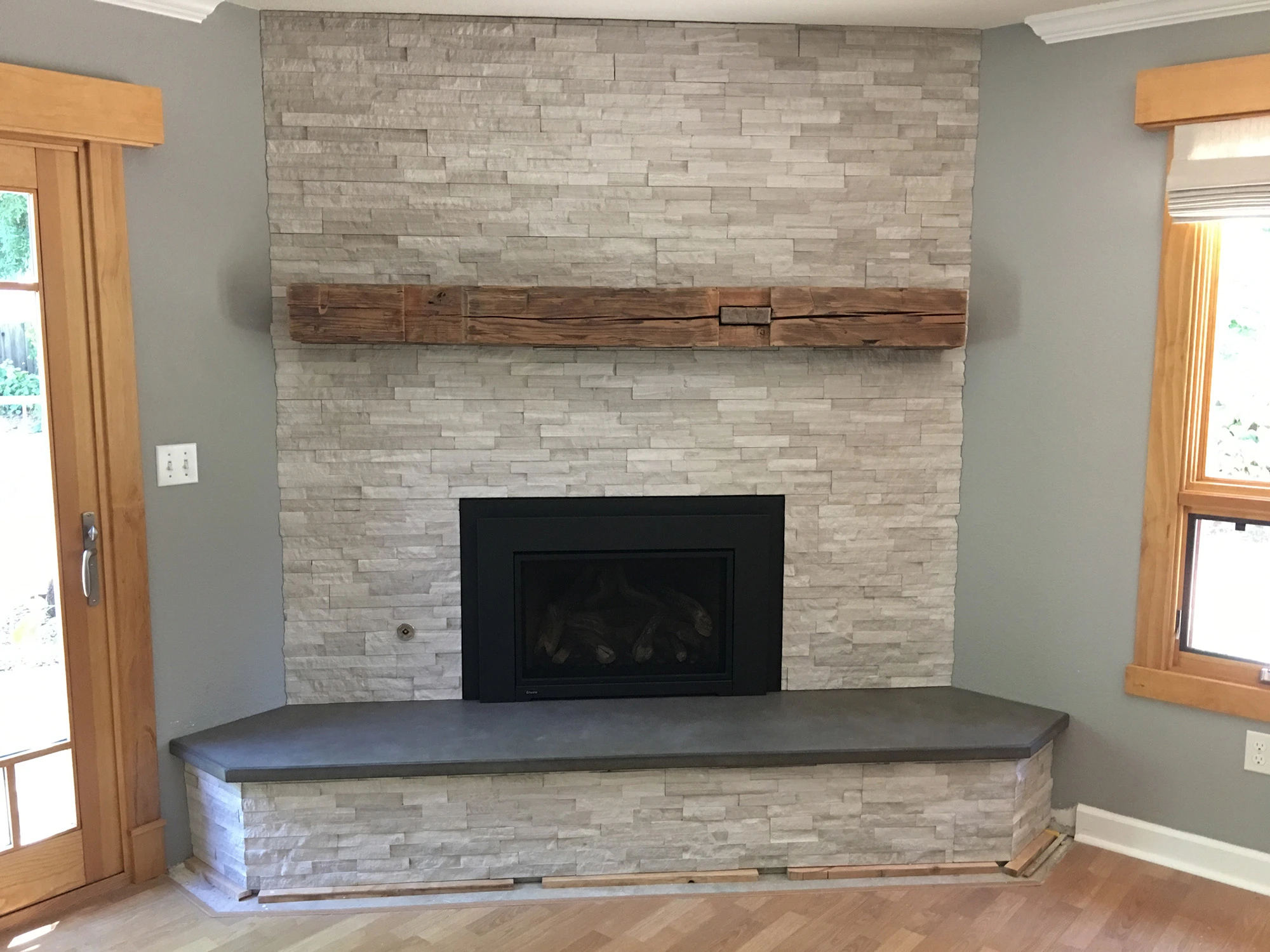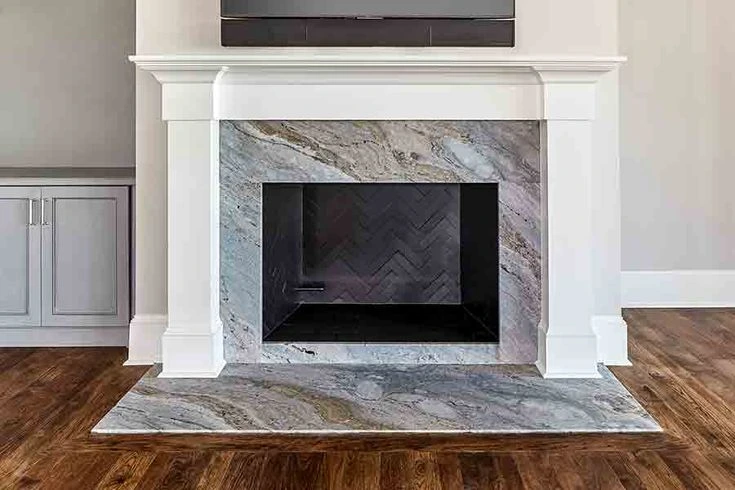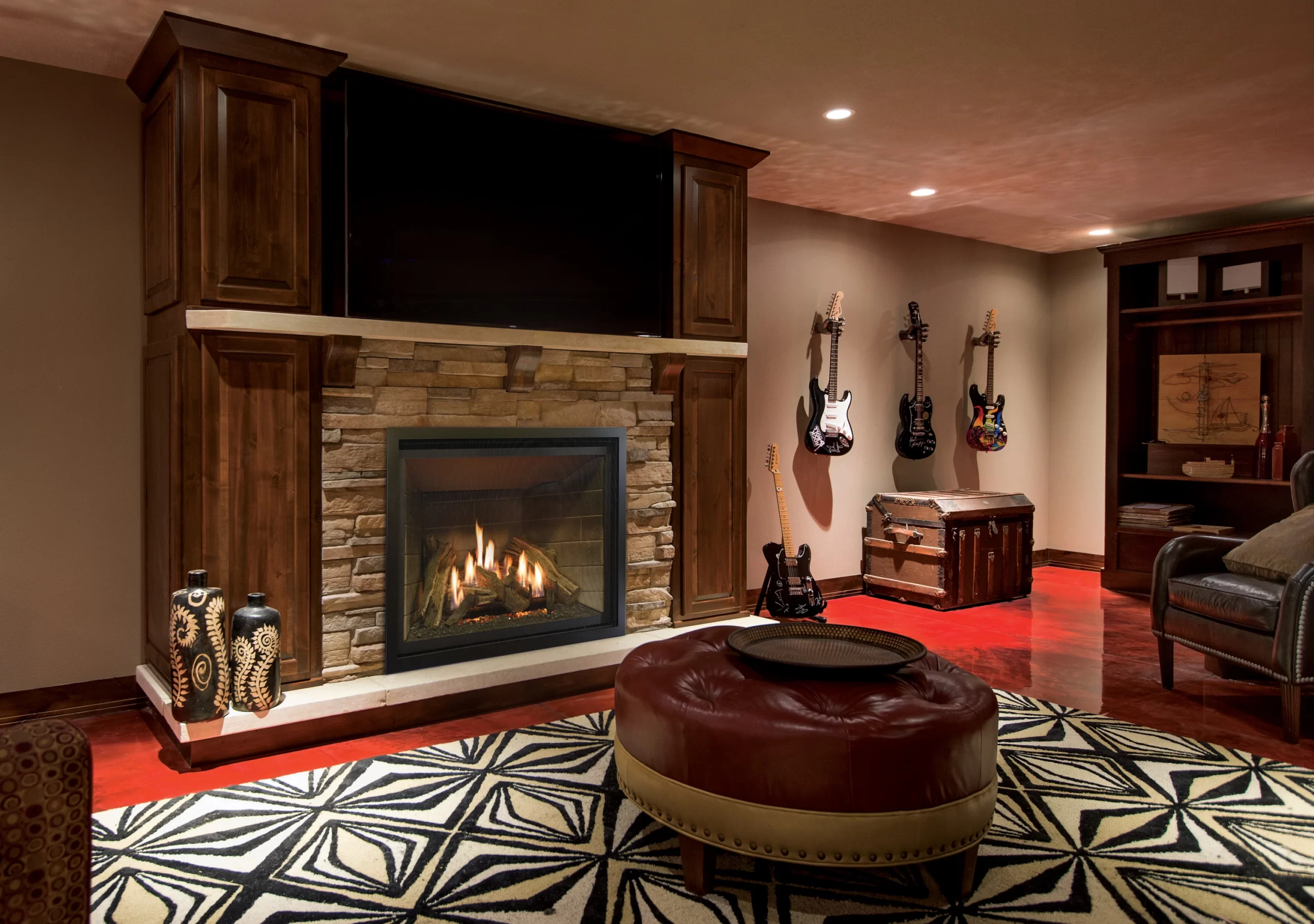Embrace a cozy comfortable fireside charm in your basement
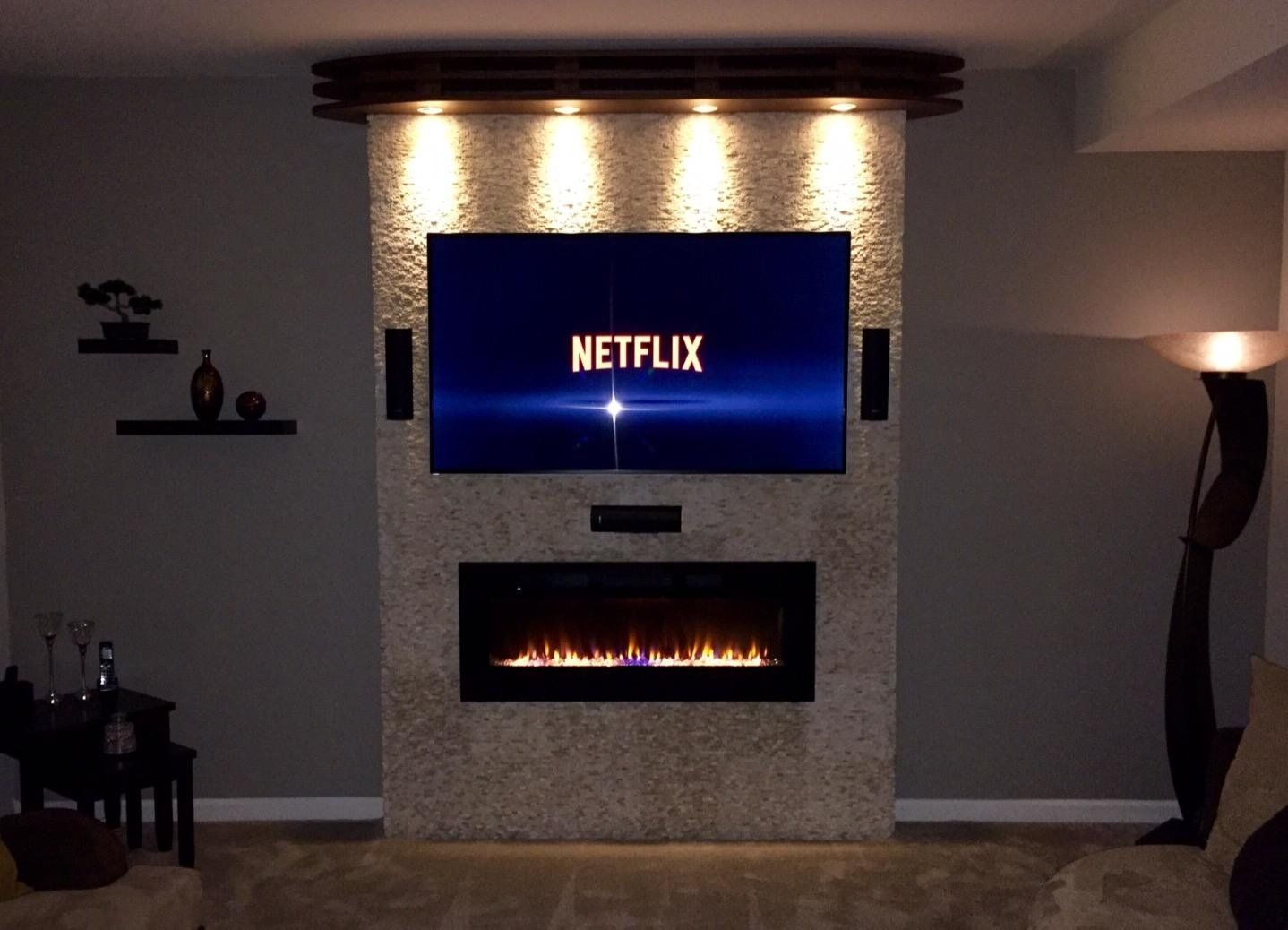

What is a Fireplace?
A fireplace is a structure designed to contain a fire and provide heat and light. It typically consists of a firebox, where the fire is built, and a chimney, which carries smoke and other combustion products away from the fire. Fireplaces can be found in homes, commercial buildings, and outdoor spaces, and can burn various types of fuel, including wood, gas, and electricity. Fireplaces can also serve as a decorative feature in a room, providing a cozy and inviting atmosphere.
Why a Fireplace in the Basement?
While renovation, installing a fireplace in the basement of your home can be a smart choice for several reasons. Firstly, it can provide an effective heating solution for a part of your home that is often cold and difficult to warm up. A fireplace in the basement can be used to supplement your central heating system, helping to reduce energy bills and increase energy efficiency. Additionally, a well-designed basement fireplace can add aesthetic appeal to your home, providing a cozy and inviting atmosphere. Finally, a fireplace in the basement can increase the overall value of your home, making it a smart investment in the long run.
Developing a Fireplace Base in Your Basement
Tips and Ideas
If you have a basement and you’re thinking of adding a fireplace to your living space, you’ll need a sturdy and attractive base to hold your fireplace. A well-built fireplace base not only provides a solid foundation for your fireplace but also adds aesthetic appeal to your basement. In this article, we’ll explore the different types of fireplace bases and provide tips and ideas for building your own. We’ll cover the following topics:
Types of Fireplace Bases
A fireplace base, also known as a hearth, is the foundation upon which your fireplace is built. It is designed to protect your home from the heat of the fire and provide a solid and level surface for the fireplace to sit on. A fireplace base can be made of various materials, such as concrete, stone, marble, or tiles, depending on your preferences and budget.
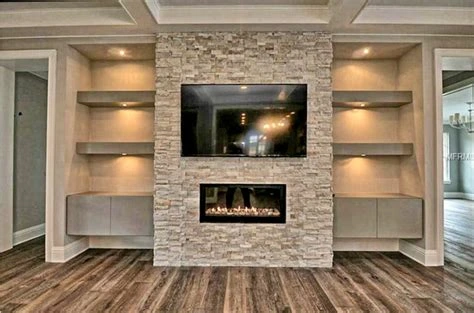
Tile Fireplace Base
Tile fireplace bases are a budget-friendly option that can be designed in various styles and patterns. Tiles come in different materials, such as ceramic, porcelain, and natural stone, and can be cut to fit any size and shape. Tile bases are easy to clean and maintain but may not be as durable as other materials.
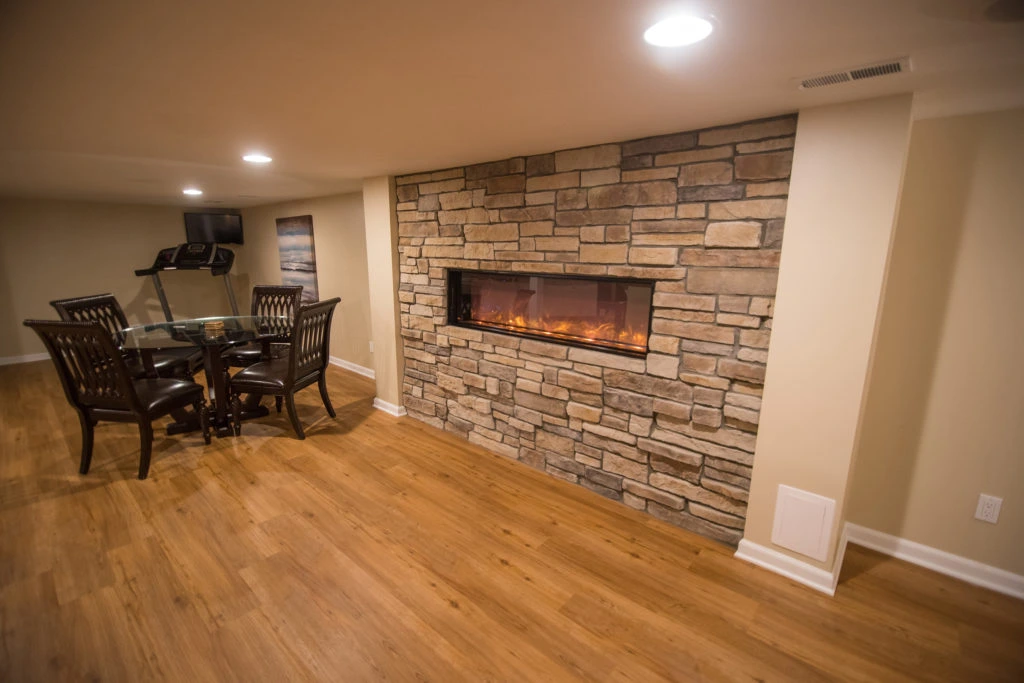
Electric Fireplace Base
Electric fireplaces are becoming increasingly popular as they are easy to install and maintain. An electric fireplace base is typically made of wood or MDF and can be customized to match your basement décor. Electric fireplace bases do not require a vent and can be placed anywhere in your basement with access to an electrical outlet.
Tips and tricks to design different types of Fireplace Bases
Building a fireplace base can be a great way to add a cozy and functional feature to your home. The first step in constructing a fireplace base is to determine the appropriate size and location for the base. Next, you’ll need to gather materials such as concrete blocks, mortar, and a metal fireplace insert. Once you have your materials, you can begin building the base by laying the blocks in a level and sturdy foundation. Then, using mortar, you can secure the blocks in place and add additional layers until the desired height is reached. Advantages of Concrete Fireplace Base
Building a concrete fireplace base has several advantages. Firstly, it allows for a custom design that can perfectly fit the aesthetic of your home. Additionally, concrete is a durable and long-lasting material that can withstand high temperatures and heavy use. Furthermore, building a concrete fireplace base yourself can save you money on labor costs and provide a sense of accomplishment and pride in your DIY project. Finally, a concrete fireplace base is low-maintenance and easy to clean, making it a practical choice for homeowners who want a functional and attractive fireplace feature.
Why you should never build a Concrete Fireplace Base without professional assistance?
Certainly! Here are some potential disadvantages of a DIY fireplace base:
Lack of professional expertise: Building a fireplace base yourself requires a certain level of expertise in masonry and construction. If you are not familiar with these skills, you may end up with a poorly constructed fireplace base that poses a safety hazard or is unsightly.
Safety hazards: A DIY fireplace base that is not properly installed or maintained can pose safety hazards such as fire, carbon monoxide poisoning, or gas leaks. It is important to follow proper installation and maintenance guidelines to ensure that your fireplace is safe to use.
Time-consuming: Building a DIY fireplace base can be a time-consuming process that requires careful planning, preparation, and execution. If you are short on time or do not have the necessary skills, a DIY project may not be the best option.
Cost: While building a DIY fireplace base can save money on labor costs, the materials and tools required can still be expensive. Additionally, if you make mistakes during the construction process, you may end up spending more money on repairs.
Aesthetic limitations: A DIY fireplace base may not be able to achieve the same level of aesthetic appeal as a professionally designed and installed fireplace. This can impact the overall look and value of your home.
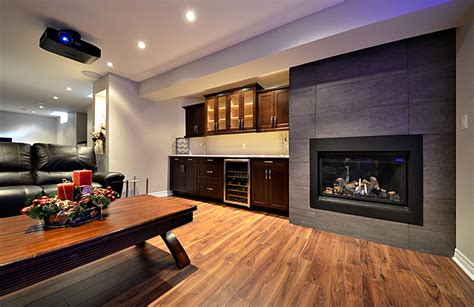
How to finish a Stone Fireplace Base?
To build a stone fireplace base, the first step is to choose the type of stone that matches your basement décor. You can choose from a variety of stones such as limestone, granite, or slate, depending on your personal preference and budget. Once you have selected the type of stone, you’ll need to measure and mark out the area where you want the fireplace base to be. The next step is to excavate the area, remove any debris, and create a level base. Then, you’ll need to lay a foundation of concrete or mortar and begin arranging the stones in a pattern that matches your décor. This can be a time-consuming process, but the end result will be a beautiful and durable fireplace base that adds character and warmth to your home.
How to finish a Tile Fireplace Base?
A DIY tile fireplace base is a great way to add a touch of style to your living space without breaking the bank. The first step in this project is to choose the type of tile that suits your taste and budget. Ceramic, porcelain, or stone tiles are all popular choices for a fireplace base. Once you’ve selected your tiles, you’ll need to measure the area and purchase enough tiles to cover the space. After preparing the surface, you can lay the tiles in a pattern that complements your décor.
How to finish an Electric Fireplace Base?
A DIY electric fireplace base is a popular option for those who want to add a fireplace to their home without the hassle of installing a gas or wood-burning fireplace. The first step in building a DIY electric fireplace base is to select the type of base that will suit your décor and budget. You can choose from a variety of materials such as wood, tile, or stone. Next, you’ll need to determine the size and placement of the fireplace insert, which can be purchased from a home improvement store. Once you have the insert, you can build the base around it and wire it for electricity. The final step is to add any finishing touches such as trim or paint to complete the look of the fireplace.
Difference between DIY and Professionally made Fireplaces?
The main difference between a DIY fireplace base and a normal fireplace base is that a DIY option requires you to build the base yourself, while a professionally made fireplace base is typically installed by a professional or pre-built and ready to install. With a DIY fireplace base, you have the freedom to choose the materials, design, and size of the base, as well as the type of fireplace insert you want to use. This can allow for greater customization and potentially save money on installation costs. However, a DIY project also requires the necessary skills and tools to complete the construction safely and effectively.
A normal fireplace base, on the other hand, is typically installed by a professional and may come as part of a pre-built fireplace unit. The design and materials are often predetermined and may not allow for much customization. While this option may be more expensive than a DIY option, it can provide peace of mind knowing that the installation was done correctly by a professional. Additionally, normal fireplace bases may come with warranties or guarantees, which can provide added protection and assurance.
What do we offer?
Developing a fireplace in the basement can be a smart investment for homeowners, providing warmth, energy efficiency, and aesthetic appeal. We are there to make a beautiful fireplace considering your heating needs, design preferences, and safety requirements. Make a call now and you can create a beautiful and functional basement fireplace that will be enjoyed for years to come.
FAQs
What are the benefits of installing a fireplace in the basement?
Installing a fireplace in the basement can provide an effective heating solution for a part of your home that is often cold and difficult to warm up. A well-designed basement fireplace can also add aesthetic appeal to your home and increase its overall value.
What types of fireplaces can be installed in the basement?
There are various types of fireplaces that can be installed in the basement, including electric, gas, wood, and outdoor fireplaces. The choice depends on your heating needs, design preferences, and safety requirements.
What safety guidelines should be followed when installing a basement fireplace?
It is important to follow safety guidelines and building codes when installing a basement fireplace to ensure that it is installed correctly and operates safely. For example, your chimney should be properly vented, and there should be adequate clearance around the fireplace to prevent fire hazards
Do I need permits to install a basement fireplace?
Depending on the complexity of the project, you may need to obtain permits and hire a professional contractor to install your basement fireplace. It is important to check with your local building department to determine what permits are required in your are

